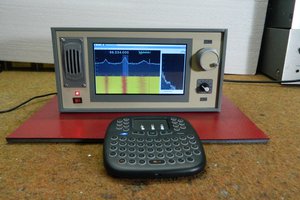Today I received the Pi Terminal-7” IPS HMI CM4 Panel All-In-One Module Raspberry Pi Computer from Elecrow. The shipment arrived in about a week in a branded box well protected from mechanical damage. The package contains:
- 7 inch Pi Terminal with user manual
- Wi-Fi Antenna
- 12V/2A Adapter
- ad three Phoenix Type Connectors
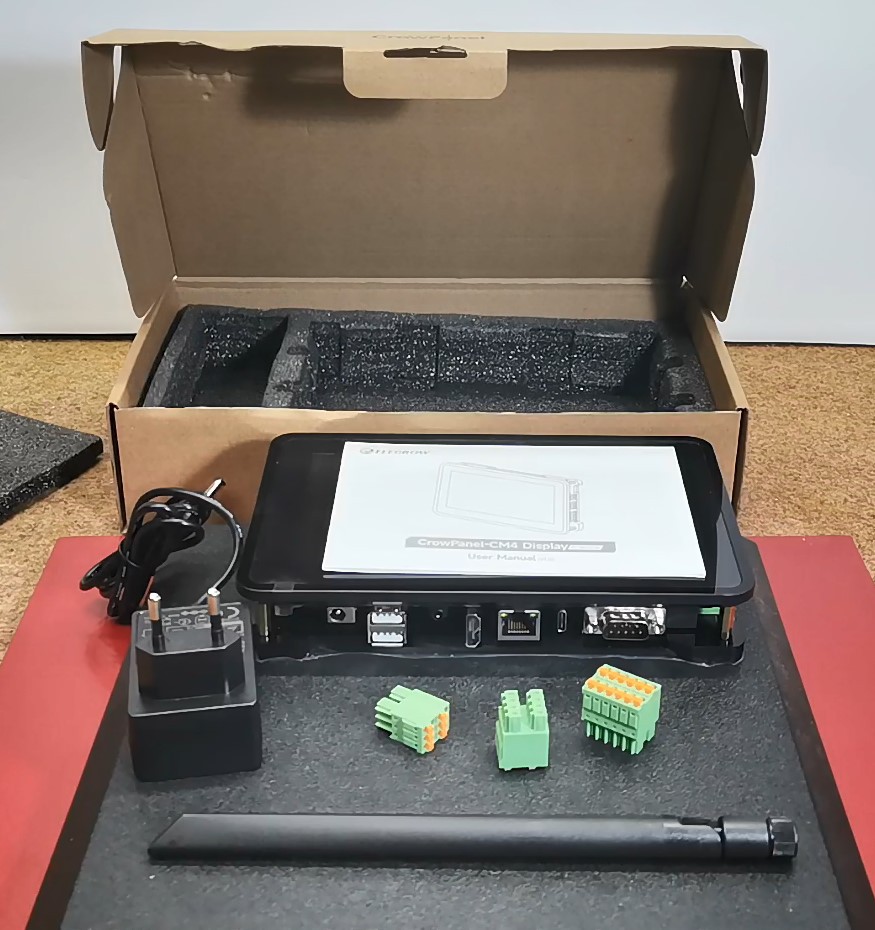
First I would like to describe some of the features and functions of this small but powerful computer. It is equipped with the powerful Raspberry Pi Compute Module 4 as the main control, with excellent real-time performance, and can quickly respond to and process real-time control and monitoring tasks. It has a 7-inch display with a resolution of 1024 x 600 pixels and a touch screen with 5-point Capacitive Touch. A highlight is the rich industrial interfaces and functional modules, including CAN bus, RS232/RS485, isolated digital IO, differential input ADC, relay control, etc., which fully meet the communication and control needs with various sensors, actuators and other devices.
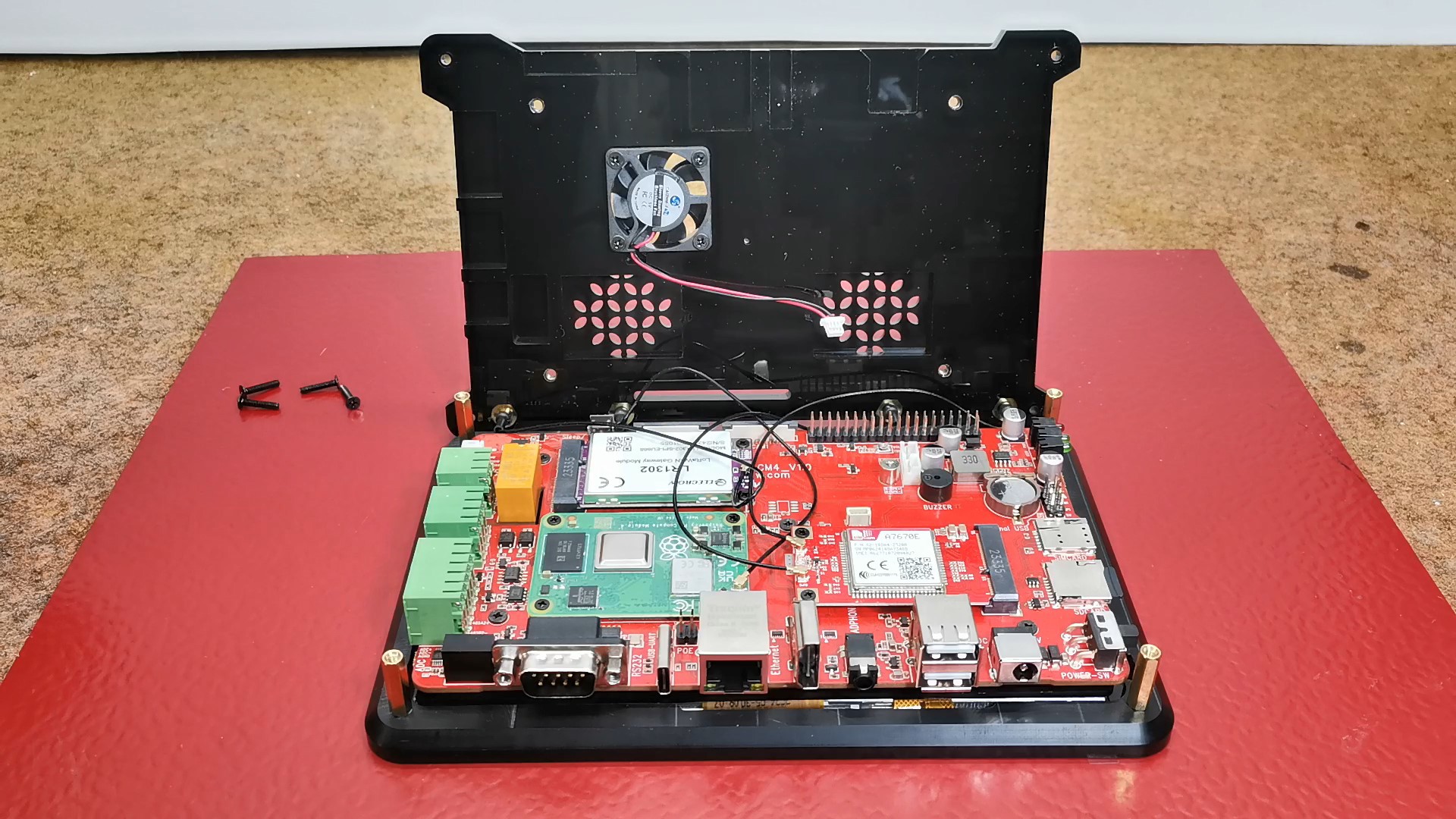
Communication capability is another highlight of Pi Terminal. It integrates WiFi, BLE, and reserves Mini PCIE interfaces for 4G and LoRa. At the same time, it provides Gigabit Ethernet to ensure high-speed data transmission and remote monitoring between devices. Pi Terminal supports a rich software ecosystem based on Raspberry Pi and is compatible with the Node-RED programming tool, giving users the ability to easily create and manage IoT applications.
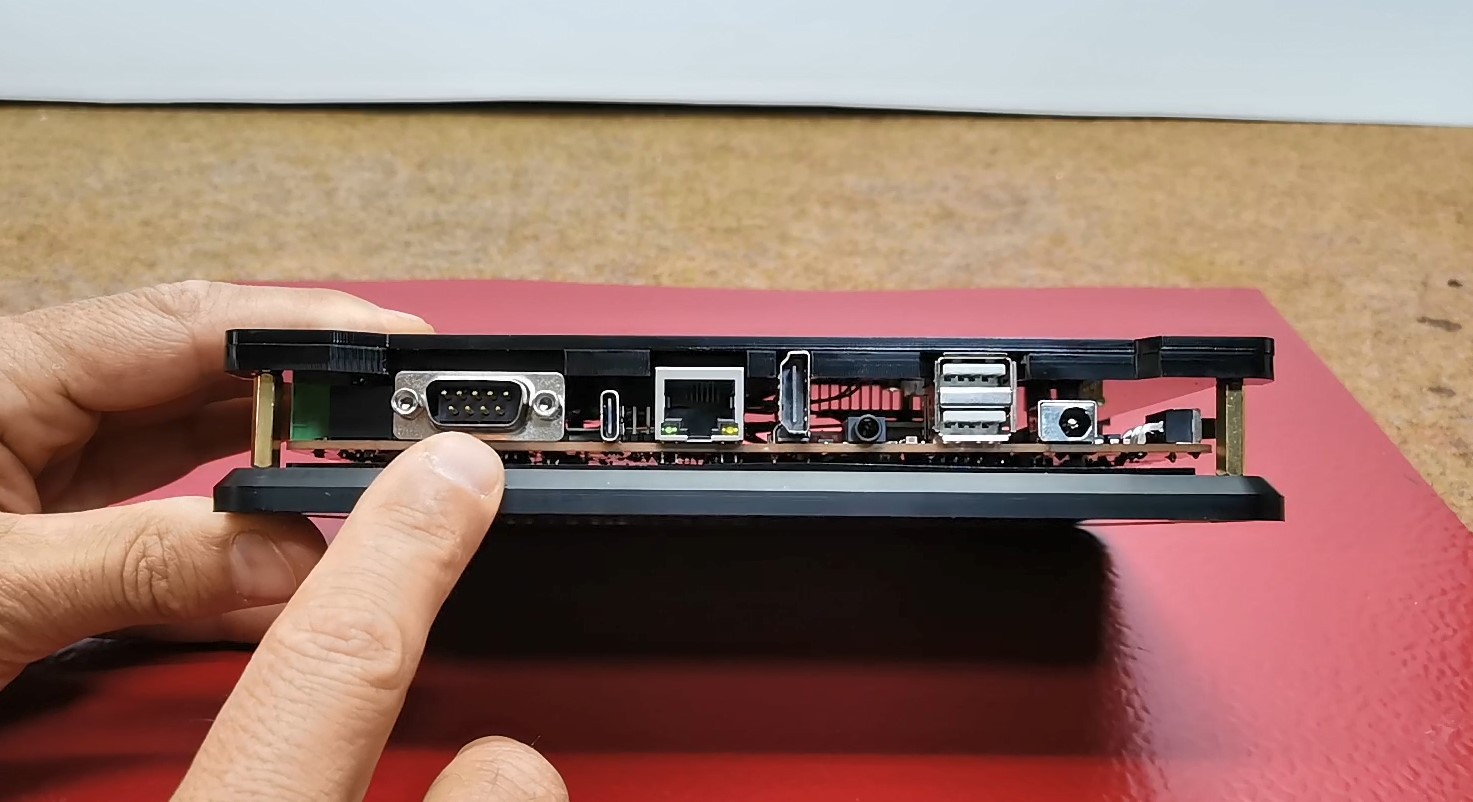
Now let's look at the input-output interfaces:
- RS232 port
- UART comunication port
- Gigabit Ethernet
- HDMI output
- audio IN/OUT connector
- Two USB-A ports
- On/Off switch
- Micro DS Card slot
- SIM card slot
- LED Indicators
- Four SMA antenna conectors
- 2*20 PIN GPIO
- Two Camera slots
- another GPIO connector
- Relay control
- DO & DI
- and CAN, RS485, and ADS connector
Next let's briefly look at the inside where the motherboard is located. Boardf consist the Raspberry Pi CM4 board cooled by small fan, relay, speaker connector and the two PCIE slots in which the LORA and GPS modules are mounted which I additionally ordered. This time I want to present you a simple way to make a portable Software Defined Radio (SDR Radio) that would work independently of a PC. For this purpose, besides this panel display, I will also use a cheap RTLSDR USB dongle.
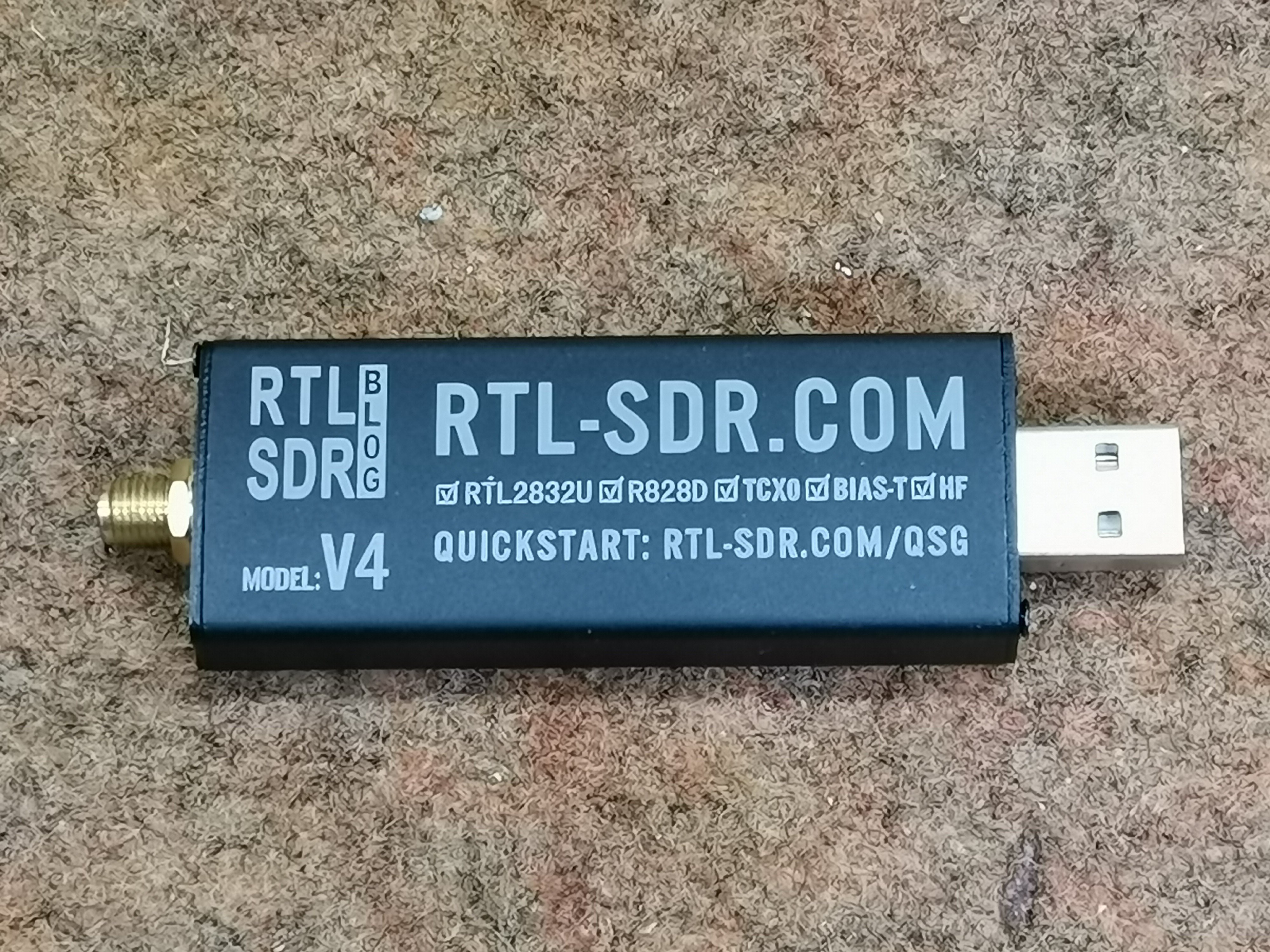
A software-defined radio (SDR) is a radio communication system that uses software to process various signals (modulation, demodulation, decoding, etc.). A typical SDR setup involves an RF front-end connected to a computer that will perform the conversions from digital to analog, and vice versa. Because of rapidly developing digital electronics, the capabilities of SDR continue to increase. In this case, the RF front end is the RTLSDR USB dongle, and the signal processing and visual presentation is the task of this beautiful display module.
In one of my previous videos I presented a way to make a similar device like this, but then some hardware work and modifications were needed and some more advanced knowledge in this area was required to make it. Unlike then, this time making the device requires almost no knowledge in the field of electronics, and the SDR radio works flawlessly and stably. This time I present to you one of the possible solutions, which is box that I specially made for this display module, but also the device can be made without a box so that the rtlsdr dongle can be glued directly to the back with double-sided adhesive and we can use a wireless tuning knob if needed.
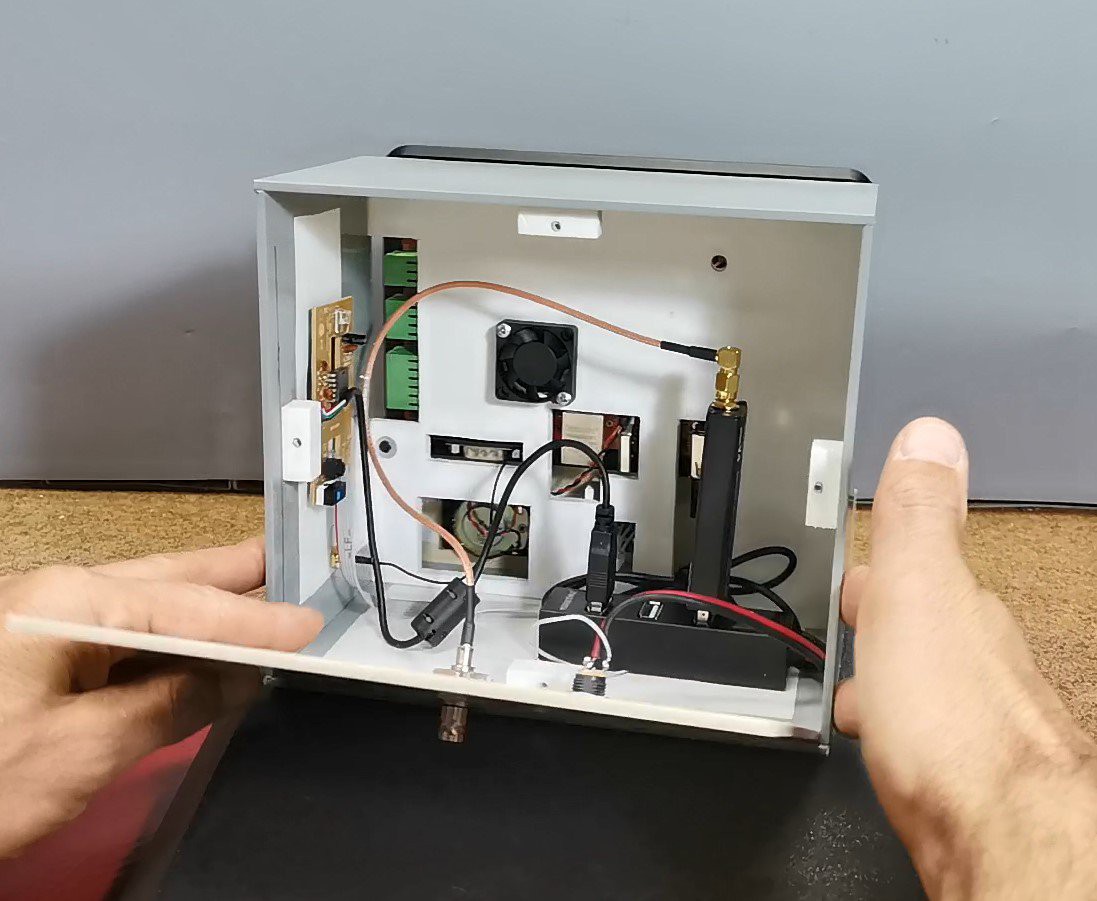
The complete device...
Read more » mircemk
mircemk
 HybridAir
HybridAir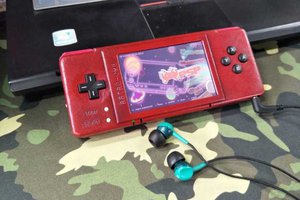

 bobricius
bobricius